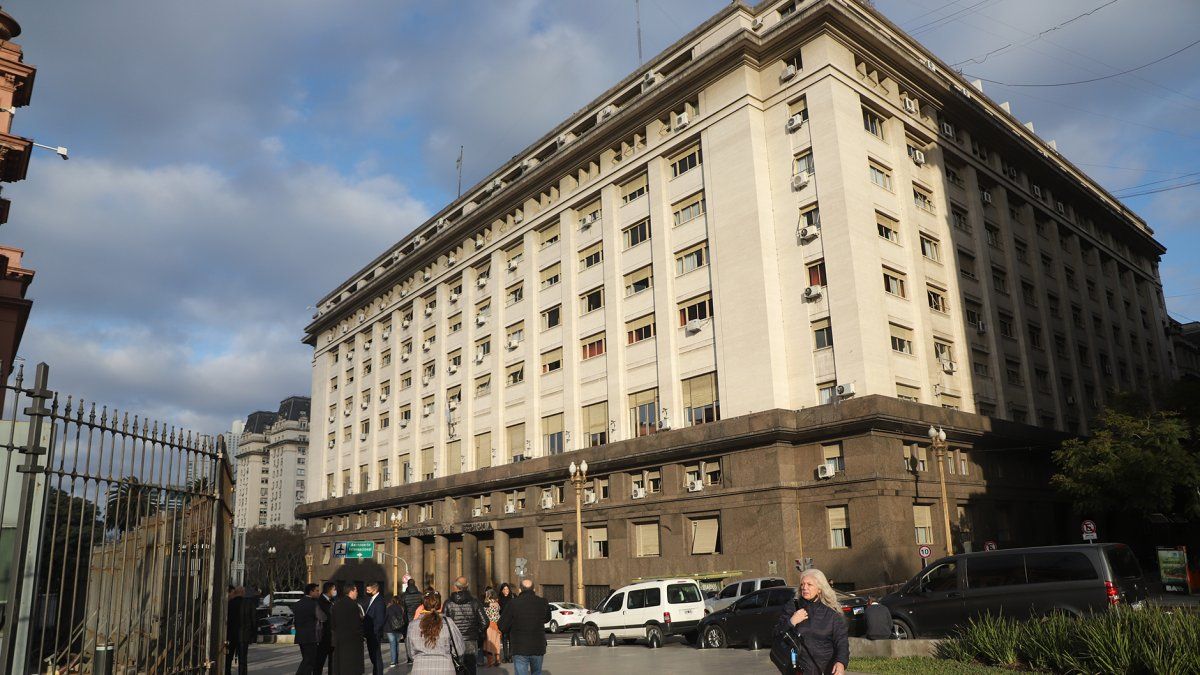In the first three months of the year, the Government executed 20.3% of the budget planned for 2023. This includes in March an expense of just over $2.4 trillion, which in nominal terms represented a growth of 94% year-on-year, below the inflation rate of the previous 12 months.
The data corresponds to the Scalabrini Ortiz Center for Economic and Social Studies (CESO) and refers to the accrued expenses of the National Public Administration (APN). that are a parameter of the behavior of the Government. The next April 20, the Ministry of Finance will release the data of the National Public Sector (SPN) on a cash basiswhich is what the International Monetary Fund (IMF) looks at.
The end of the first quarter is awaited with expectation both by market operators and by the IMF and the Government itself. It is that already in January and February more than 90% of the deficit target for the first quarter forecast at $432,000 million was consumed.
The accrued data reported by different private consultants in previous reports, based on official numbers, show that the Ministry of Economy is maintaining the line of adjustment of spending agreed with the IMF, but that this is not enough. This is explained because both in January and February the Government canceled floating debt, especially the first month. And on the other hand, it records a sharp drop in tax revenue due to the drought. It is estimated that in 2023 the decrease in resources will be 10% real.
As the CESO report shows, In March, spending contracted in real terms by 4.8%, taking inflation of 7% for the third month of the year as the starting point for the calculations. estimated by the Survey of Market Expectations (REM). In the first quarter, the accrual of the APN was $5.9 trillion. This implied a growth of 91% year-on-year.
The report indicates that in March social services grew 97% nominal to $1.6 trillion and economic services did so by 70%, up to $432,408 million.. Government administration spending rose 62% to $148,026 million. On the other hand, security expenditures grew above inflation, with $131% and those related to debt payment, for $143%.
The report specifies that Government Administration and Economic Services (subsidies) “are the items that are most reduced in real terms during 2023”. “It may be due to a combination of lower purchases (fixed goods and services); lower subsidies for segmentation; lower energy costs; and delays in payments”, says the CESO. The report adds that “energy subsidies totaled $109,799 in March, showing a nominal reduction of 21% compared to the month of 2022.”
Regarding the level of execution of budgetary credits, the Ministry of Women is in the lead, with 20.3% and that of Social Development, with 16.4%. The ones that have spent the least so far are the Ministry of Tourism, 4.7%, and the Ministry of the Interior, with 5.4% of the planned items.
The new inflation projections for Argentina published by the IMF in its latest report on the global economy, which takes it to 88% per year compared to the 60% forecast in the budget, will have an impact on the calculations of fiscal targets of this year. Although the red number 2023 is well above projections, in terms of GDP they will probably remain within expectations. The target for the first quarter is 0.26% of GDP, while the annual target is 1.9% of GDP.
Source: Ambito




